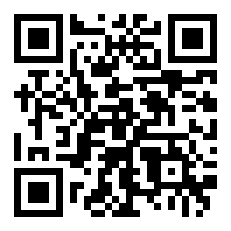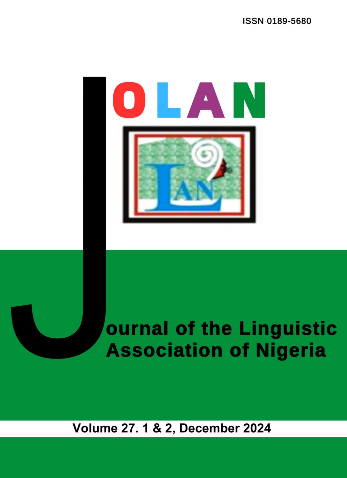A Morpho-Phonological Survey of Borrowing into Hausa Language
Abstract
Although people create or acquire words in several ways, borrowing is the most fecund source or pattern of increasing vocabulary in Hausa. This paper examines the phenomenon of borrowing into Hausa from the English language. The researcher examined written texts and listened extensively to native speakers’ speeches, among others, as a methodology of obtaining data in order to explain vividly the morphological processes involved in borrowing words from English into Hausa. The speeches were recorded and transcribed in order to obtain the natural phonological effects as delivered. The findings of this study reveal that borrowing is a very productive resource of vocabulary building in Hausa. Its productivity is as a result of the abundant strategies it employs in naturalizing English words into Hausa. The study concludes that Hausa continually invents new processes of naturalizing new words as they come from different human endeavors on almost daily basis.
References
Abubakar, A. 2001. An Introductory Hausa Morphology. Maiduguri. DTP.
Abu-Manga, A.1978. Process of Linguistic Borrowing. The case of Maiurno: A Fulanin and Hausa settlement in the Sudan in Harsunan Nijeriya. Vol. VIII. 1-11
Aronof, M. 1976. Word Formation in Generative Grammar. Cambridge. MIT Press
Bagari, D. 1987. Phonological Adaptation of Borrowed Words in Hausa. Kano. Harsunan Nijeriya vol. xxiii.
Bauer, H. 1983. English Word formation. Cambridge. Cambridge University Press.
Crystal, D. 2008. A Dictionary of Linguistic and Phonetics (6th edition). Oxford. Blackwell.
CSNL. 2003. Sababbin Kalmomi: Ingilishi Zuwa Hausa. Littafi Na Daya. Benchmark Publishers Ltd. Kano
CSNL. 2013. Sabbabbin Kalmomi: Ingilishi Zuwa Hausa Littafin Na Biyu. Zaria. ABUP.
Daniel, I. O. 2011. Introductory Phonetics and Phonology of English. Newcastle upon Tyne. Cambridge Scholars Publishing.
Fishman, B. 1969. The Linguistic Dimension of the Bilingual Neighbourhood. Fishman et al. Bilingualism in the Barrio Language Monograph. Vol. 7. Indiana. Indiana University Press.
Hangen, E. 1972. The Ecology of Language. California. Stanford University Press.
Hijazi M. 1981.Alharakatul Akhira Fi Kitabatil Arabiyya Al- Muqtarida fi Lugatu AlHausa. Mujallatu Mujammil Lugatul Arabiyya vol. 48. 1-13
Hyman, L. 1970. The role of borrowing in the justification of Phonological grammars. African Linguistics Studies. PP 1-48.
Katamba, F. 1989. An Introduction to Phonology. London. Longman. Kirk-Greene, A. n.d. The Hausa Language Board. Unpublished.
Muhammad, S. I. 1980. Are-aren Kalmomi Cikin Hausa. Zaria. IOE, ABU.
Newman, P. 2000. The Hausa Language: An Encyclopedic Reference Grammar of Hausa. Yale. University of Yale Press.
O’Grady, W. 2011. Contemporary Linguistics (2nd Ed). Essex. Longman.
Rufa’i, A. 2003. A Survey of Modern Terminological Development in Hausa. Harsunan Nijerya Vol. XX. 15-21
Sani, D. 2002. Word-Formation in Hausa: A Case Study of Derivation, Functional Shift and Clipping. Ph.D. Thesis. Dept. of Nigerian Languages, Bayero University
Sani, S. 2008. Political Language and Hausa Lexical Expansion. Kano: Benchmark Publishers Limited.














